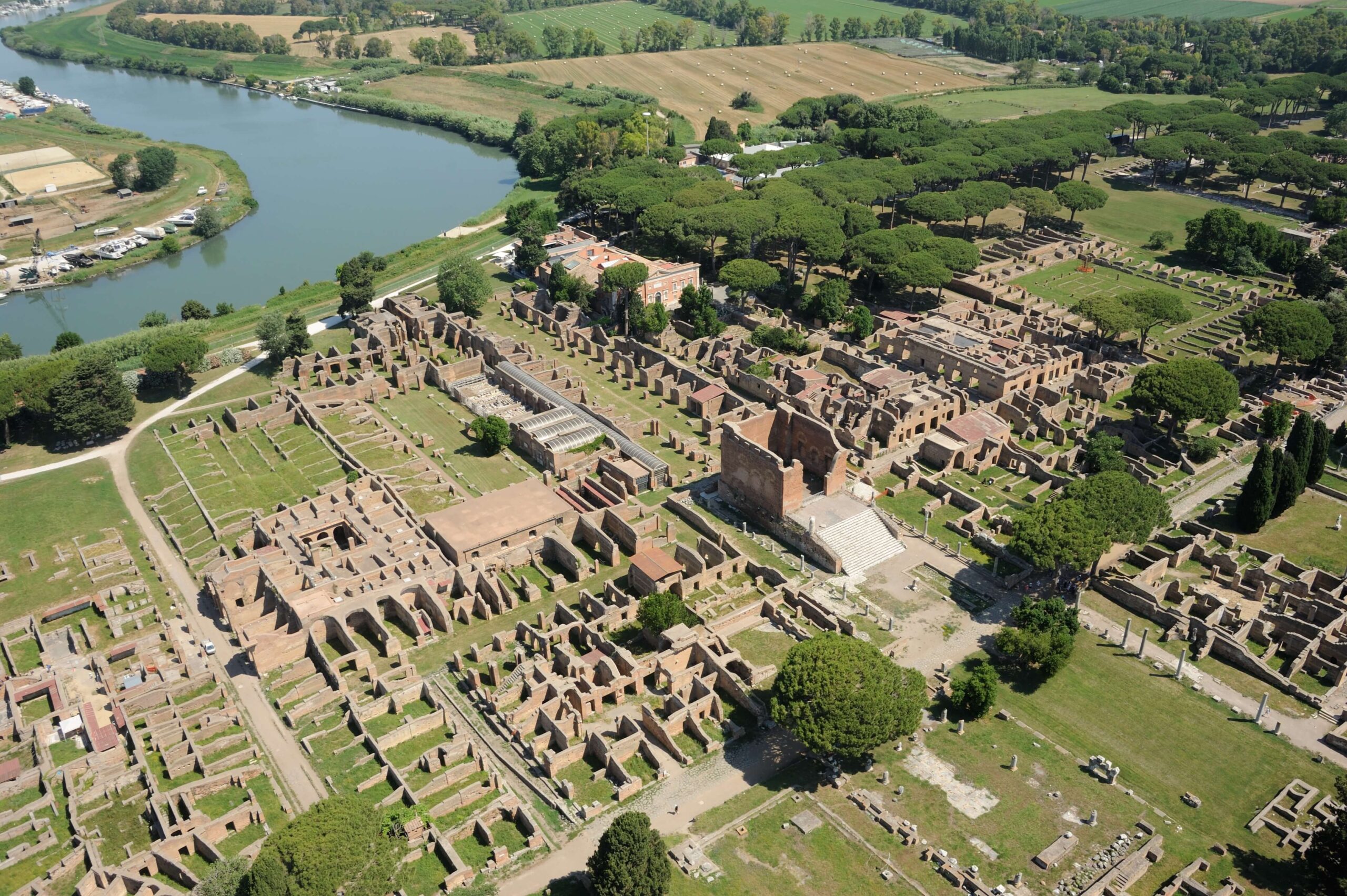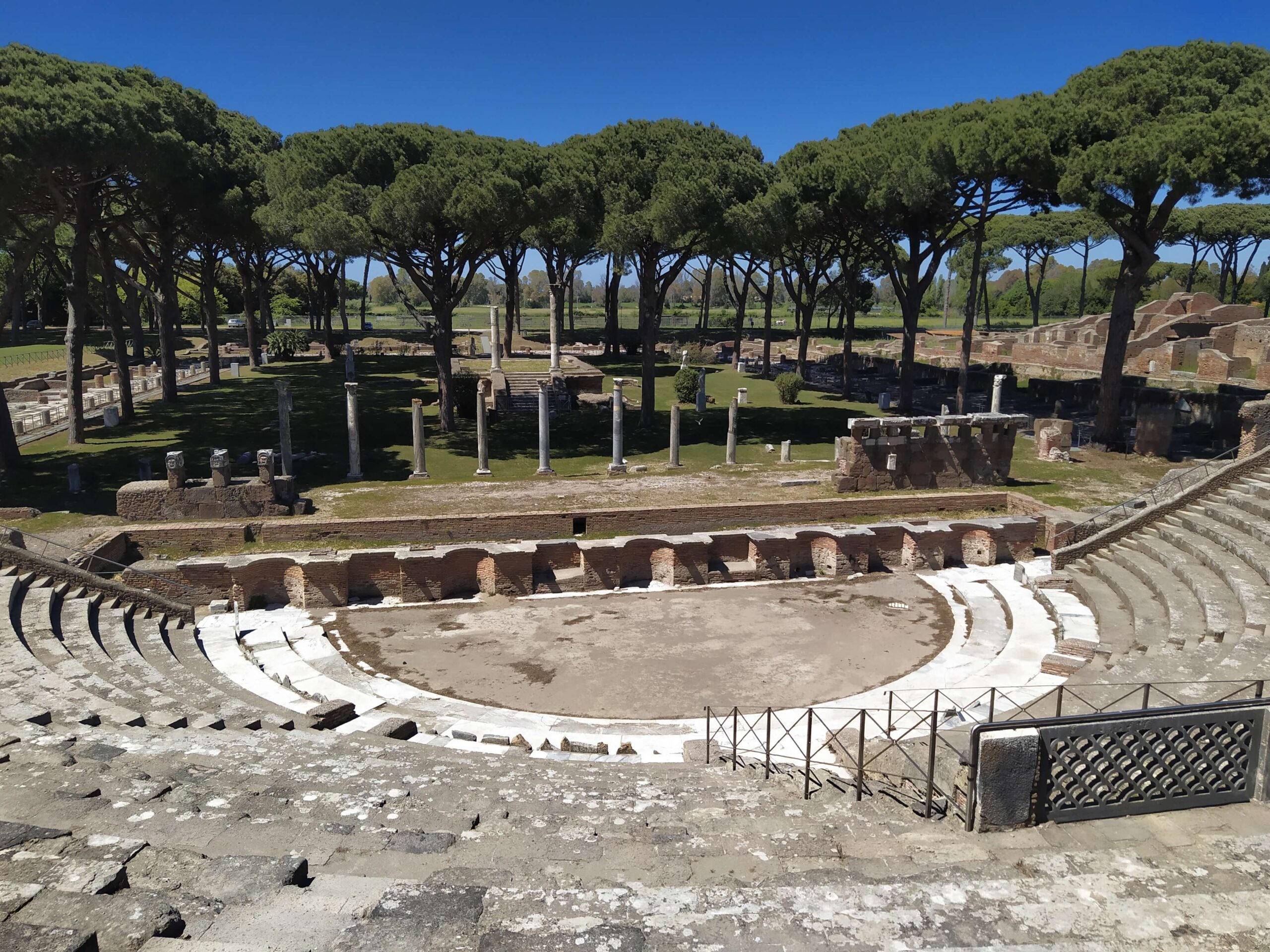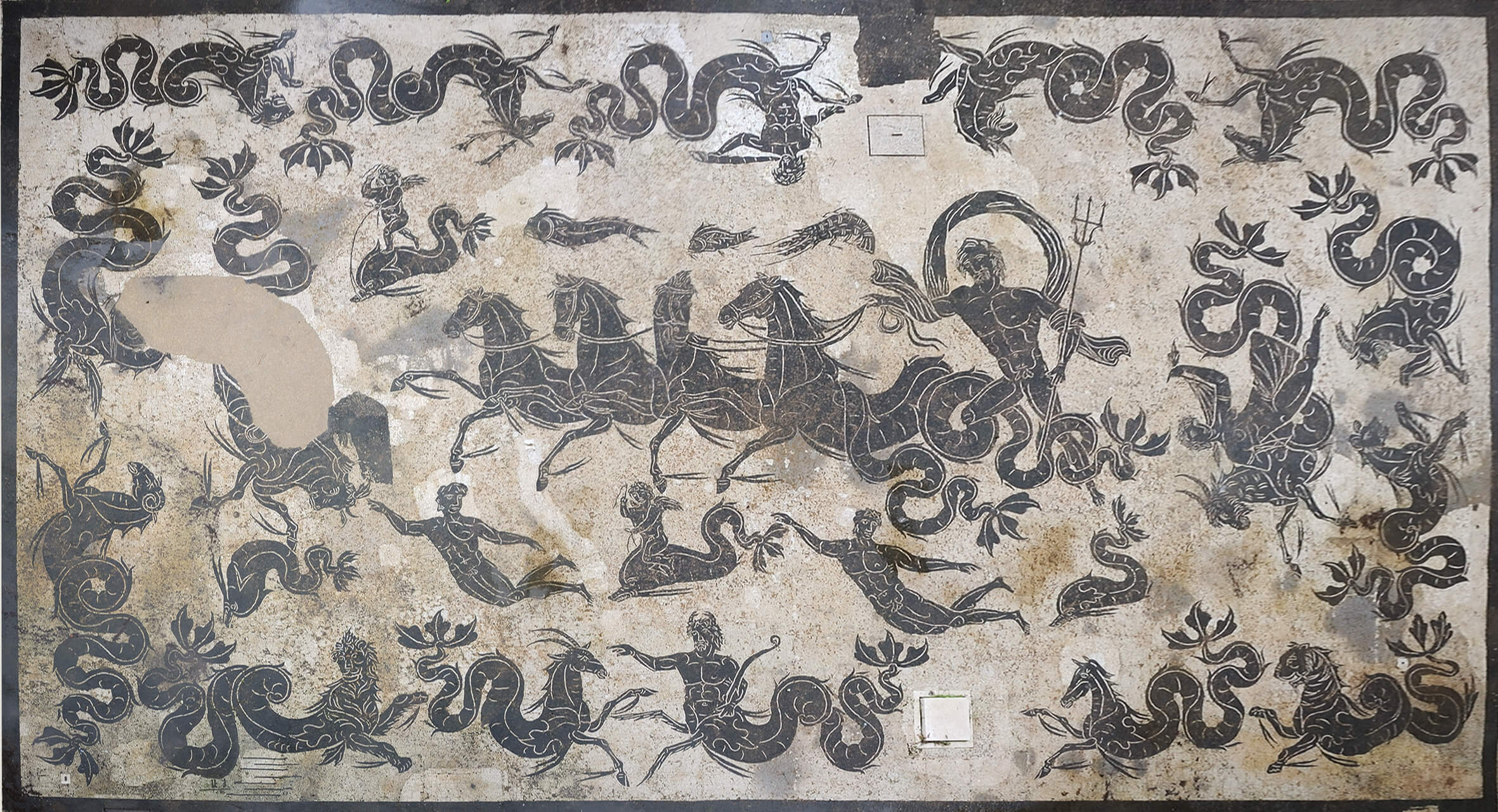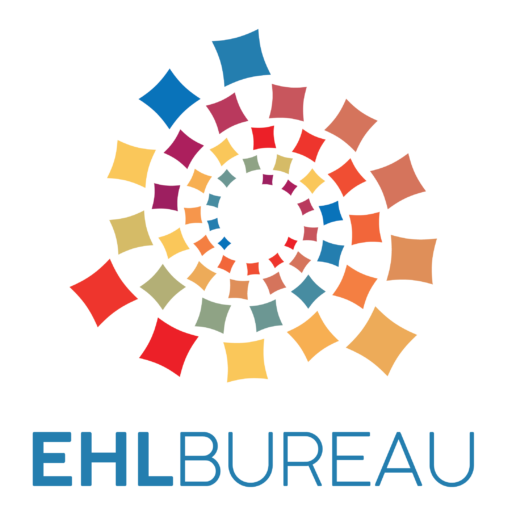This website uses cookies so that we can provide you with the best user experience possible. Cookie information is stored in your browser and performs functions such as recognising you when you return to our website and helping our team to understand which sections of the website you find most interesting and useful.
Archaeological Area of Ostia Antica



The EHL Site
The ancient Roman city of Ostia was once situated at the mouth of the river Tiber, about 30 km to the west of Rome. Ostia is Latin for “mouth”, the mouth of the Tiber. The river was used as harbour, but in the Imperial period two harbour basins were added to the north, near Leonardo da Vinci airport. The harbour district was called Portus.
Ostia was essentially used to stock Rome and the Emperor with supplies
The archaeological area is 84 hectares, 33 of which are ancient structures: Monuments of ancient Ostia:
- Apartments buildings (insulae)
- Domus, the houses of the upper class
- Hotels, bars and hundreds of shops
- Baths and communal latrines
- The seats of guilds
- Workshops, such as bakeries and fulleries
- Store buildings
- Public buildings
- Temples and little shrines, dedicated to traditional and oriental deities
- Wall-paintings
- Mosaics
- Sculptures
European dimension
Ancient Ostia was the gateway to Rome for men and women from all over the Mediterranean. The site is relevant for its vocation to multiculturalism, civil coexistence and integration: a place of circulation of goods, of different cultures and religions that coexisted in an empire to the point to be considered a predecessor of today’s Europe.
Ostia was the “gateway of Rome” during the Imperial period. Its multiculturalism is evident in some monuments, like the Square of the Corporations: on the floor mosaics are inscribed with the names of the peoples coming from the main ports of the current France (Narbonne), Spain (Tarragona, Cadiz) and Mediterranean Africa (Carthage) that in Ostia they had their own offices.
For Ostia antica the keyword is integration. If we extend our gaze to Portus, the port of Ostia built by Emperor Claudius and enlarged by Trajan, the keyword becomes circulation: a vocation that the territory still has. Near the North Pier of the Port of Claudius rises the Fiumicino airport today. Integration and circulation are the two great challenges of today’s Europe: integration between peoples and ethnic groups within Europe itself and towards non-European people arriving in Europe; free circulation of EU citizens within the borders of the Member States, with attention to the equality of rights for all; movement of goods in a common market with a single currency. Today as in the time of the Roman Empire.
As a cultural melting pot, Ostia has been the place through which cults coming from the Eastern Mediterranean have penetrated Rome. The oldest Jewish synagogue ever found outside of ancient Palestine was found in Ostia. Today the Jewish community of Rome carries out some of its celebrations, recognizing a founding and identity value and in collaboration with the Park organizes the contemporary art biennial “Art and Memory”.
The organization
The Park manages conservation, archaeological and monumental heritage works. It also oversees and maintains the Park’s structures and infrastructures.
In addition, the Park carries out research activities (e.g. excavations, survey campaigns etc.) carried out by national and international cultural institutes. The operational capacity of the institute is also demonstrated by the activities carried out by the Park in the field of valorisation, dissemination, communication and education.
Enhancement activities include the organisation of exhibitions, the events of the summer season held in the theatre of Ostia Antica, with positive repercussions both in the economic sphere and in terms of the enhancement of the area, and historical re-enactments, entrusted to associations active in the area.
The educational activities of the Park intend to train the new generations to know and respect the heritage and the ethical and cultural values it carries, with the awareness of being part of a past common to that of all the populations that gravitated on the Mediterranean Sea.
Educational workshops for primary school students: different aspects of the daily life of Roman society with reference to ancient Ostia: storage activities of foodstuffs coming from the Mediterranean basin; trade; exchanges of goods, people, uses and cults that made Ostia a multi-ethnic city.
“School-work alternation” projects: it involves teenagers in activities that help them to attribute meaning and values to the cultural heritage and to understand its role in contemporary society. It is aimed at acquiring skills that can be spent at work. This way teenagers will approach the cultural heritage, bearing in mind the central role that Rome and Ostia had as centers of aggregation of the empire. The projectss bring students closer to ancient architecture in its original context through the acquisition of notions on documentation and survey techniques with practical activities showing them the different professionals working in the field of cultural heritage, approaching the knowledge of archaeological heritage of their territory and activities of protection, use and conservation.
The Park has free admission on 27 January, “Giornata della Memoria” (Remembrance day).
